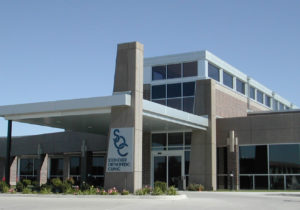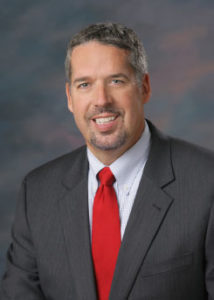Steindler Orthopedic Clinic Case Study
 The HITECH Act became law in 2009, and consequently $19 billion was allocated to develop health information technology. With passage of the Affordable Care Act (ACA) one year later, momentum was clearly transitioning the medical industry from paper to electronic storage and sharing. The race was on to pilot and produce electronic health record (EHR) systems that could satisfy newly mandated Meaningful Use requirements while improving the quality and cost of healthcare.
The HITECH Act became law in 2009, and consequently $19 billion was allocated to develop health information technology. With passage of the Affordable Care Act (ACA) one year later, momentum was clearly transitioning the medical industry from paper to electronic storage and sharing. The race was on to pilot and produce electronic health record (EHR) systems that could satisfy newly mandated Meaningful Use requirements while improving the quality and cost of healthcare.
Steindler Orthopedic Clinic, a leader in providing exceptional orthopedic care, was faced with the same daunting question most medical practices faced: What EHR systems are available on the market that will best serve our unique needs? It was also important to consider which system provider would prioritize this clinic’s requests for service and be around for the long haul to address its needs as it adapted to regulatory, industry and infrastructure demands.
Asking the right questions
Jerald Forrester, CEO of Steindler, explained the process by which his practice settled on Exscribe as their EHR system: “It’s a partnership. Any time you get EHR, it’s expected to be long term. In any partnership, it’s expected you’ll have issues – bad or good – that need to be dealt with.”
Forrester pointed to one of the key questions Steindler asked: “In the end, will the partner be able to keep up with change in regulations and change in technology? Because that’s what’s important to everybody. After our doctors had vetted five or six different systems, conducted site visits, and listened to presentations we decided Exscribe was the one. We went live with Exscribe in September of 2013.”
A system designed just for orthopedics
The decision made sense. Exscribe EHR is the first electronic health records system developed by and exclusively for orthopedic practices. Few systems are built in a streamlined way for satisfying specific workflow and Meaningful Use requirements. Competitors’ multi-specialty features tend to lead to time- and labor-intensive redundancies that hobble physicians, staff and technicians. The Exscribe EHR system directs those valuable resources precisely where they should go, to improving patient care and quality of life for all.
Physicians are already constrained by time-consuming documentation requirements and redundant records practices. They have little time to spare for vital face-to-face dialogue with patients. In addition, various complications with some EHR systems, such as pop-up tabs, hard-to-navigate menus, and poorly designed user interfaces lead to operational inefficiencies can make electronic records more cumbersome than paper charts. This defeats the entire purpose of EHR systems that, after all, are intended to improve records storage and dissemination and result in greater patient engagement and quality of life optimization for physicians and staff.
Maximizing time for patients

Proper EHR operation should leave practices free to marshal their staff’s time as appropriate, and to remove less vital responsibilities from physicians. The goal is simple: to maximize physician-to-patient engagement. Overly complicated, multi-specialty platforms force physicians to perform functions that staff should otherwise be empowered to complete. In addition, frequent failures of systems to permit interoperability require additional staffing resources to translate cross-practice patient data. This can sometimes even require manual entry, rendering the system a drain on productivity rather than an enabler.
Trends indicate demands for interoperability will only intensify as mobile technologies permit increasing numbers of patients to exchange information directly with practices to manage health wellness and chronic conditions remotely. Simply put, EHR systems must be able to produce a real-time clinical narrative through robust data tracking of labs, referrals, consultations, etc., and that narrative must be immediately retrievable in order to properly monitor patient progress. EHR systems must then be capable of exporting that data as a coherent longitudinal record to collaborating practices or as context-sensitive feedback for the purposes of assessing general performance against industry or regulatory standards.
It’s all about support
Jerald Forrester of Steindler describes Exscribe’s product performance and customer-attentiveness enthusiastically: “In general, Exscribe’s support system is well above average in response time and quality. If our system is down or there is a problem within the medical record, it needs to be fixed quickly…they have always been attentive to that. It all comes down to support. Everybody has issues; it’s how well you respond – and they have been very attentive.”
Forrester goes on to illustrate his point with the following example: “When Meaningful Use was mandated a couple years ago and we had to reform, we had some problems with implementation, I made one phone call and it was fixed overnight.”
Steindler Orthopedic Clinic has been in business for 66 years because they know excellence, and work with Exscribe because they recognize it in the Exscribe EHR system.
A rare exception
So many EHR systems are built as multi-specialty platforms with features that have no purpose for the orthopedic specialty. Productivity is lost while the system is customized, and templates are developed to improve operational efficiency.
Exscribe is a rare exception to the clunky and costly competition. The workflow demands, regulatory requirements, and adaptability concerns specific to orthopedists have been built into Exscribe’s EHR that, from the ground up, has one guiding purpose: to increase the productivity of orthopedic practices. For three years now, Steindler has been reaping the returns in productivity from their investment. They aren’t alone. Exscribe EHR is quickly becoming the choice of leading orthopedic practices. Take the lead. Go with Exscribe.



